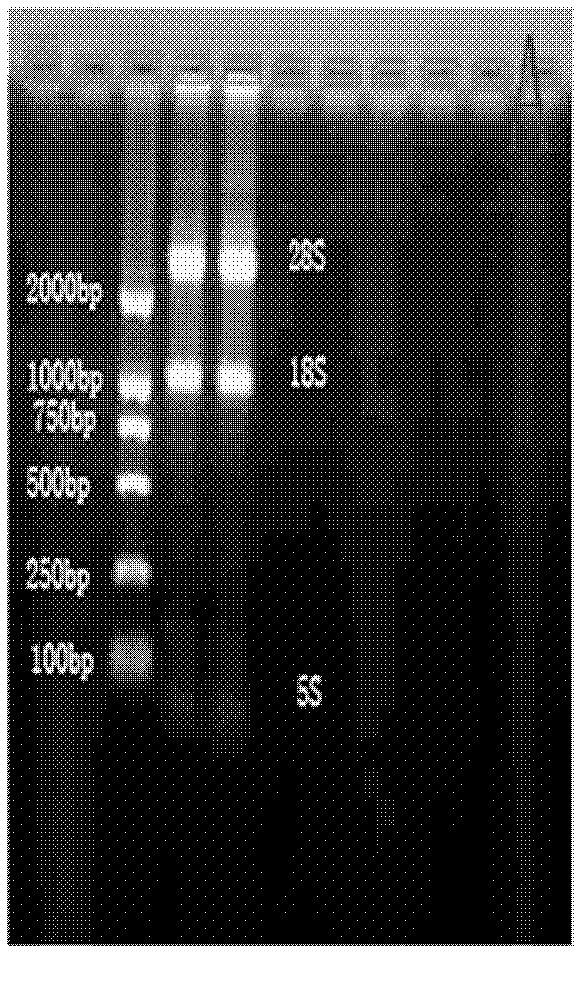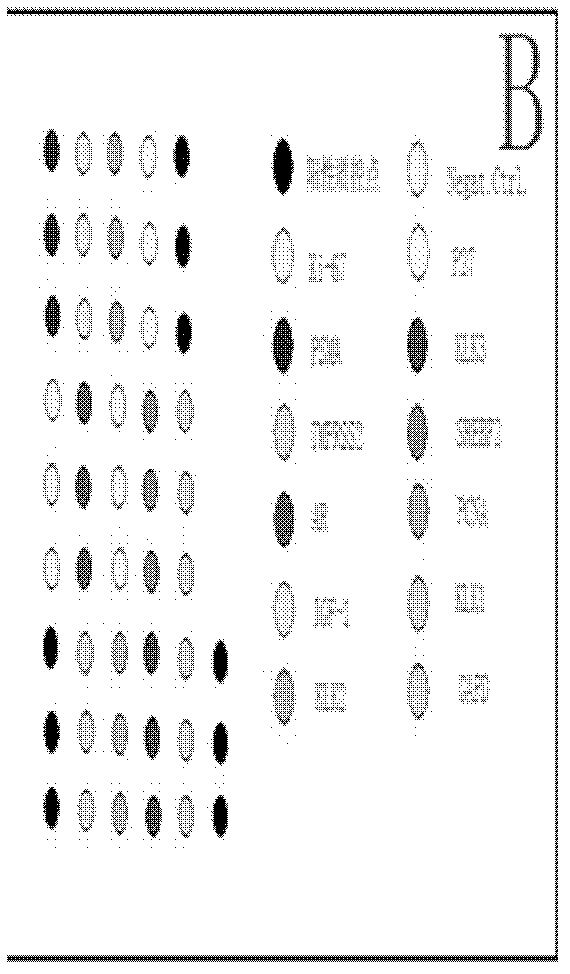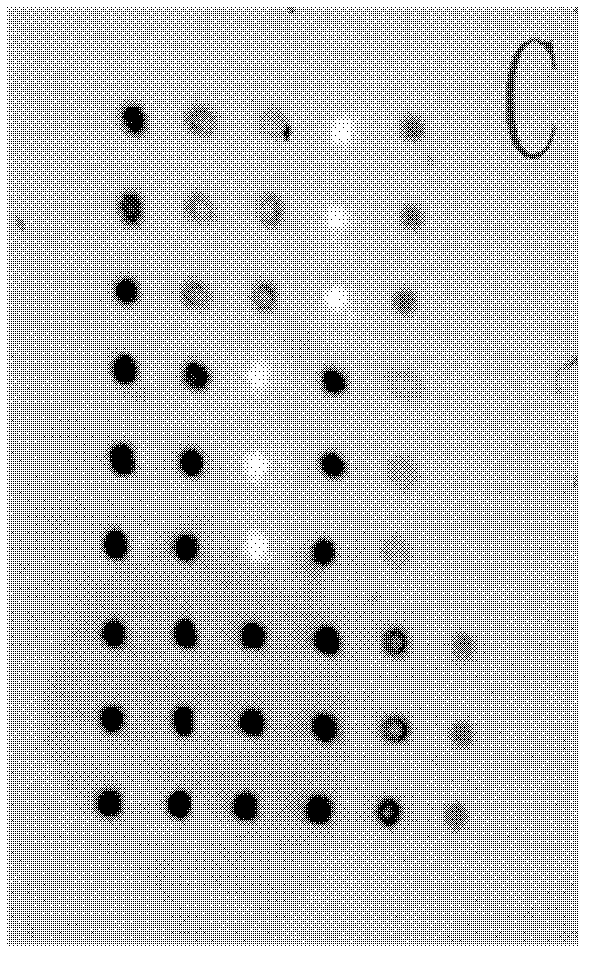Nanogold-labeled chip for polygene diagnosis of prostate cancer
A prostate cancer and nano-gold technology, applied in the field of gene chips, can solve problems such as huge investment, difficulty in combining nano-gold and probes, long-term funding, etc., and achieve the effect of reducing inspection costs
- Summary
- Abstract
- Description
- Claims
- Application Information
AI Technical Summary
Problems solved by technology
Method used
Image
Examples
Embodiment 1
[0035] The nano-gold marker chip for multi-gene diagnosis of prostate cancer of the present invention comprises 11 genes (IGF1, P27, AR, PSMA) with significantly different expressions in prostate cancer and benign prostatic hyperplasia obtained after screening by gene chip and verified by fluorescent quantitative PCR. , KLK3, PCNA, Ki-67, KLK1, KLK2, TMPRSS2, SREBF2), prostate cancer cell line RNA, nano-gold-labeled oligonucleotide probe, and a chip made of nitrocellulose. This method is based on the hybridization between the biotin-labeled target sequence and the immobilized probe on the chip, through the affinity effect of biotin-streptavidin, the target sequence is bound to nano-gold, and then silver-stained by nano-gold catalysis The magnification effect produces a recognition signal visible to the naked eye.
[0036] The specific production method of the chip:
[0037] 1 Biotin-labeled target sequence preparation
[0038] 1.1 RNA extraction
[0039] 1.) After adding Tr...
PUM
 Login to View More
Login to View More Abstract
Description
Claims
Application Information
 Login to View More
Login to View More - R&D
- Intellectual Property
- Life Sciences
- Materials
- Tech Scout
- Unparalleled Data Quality
- Higher Quality Content
- 60% Fewer Hallucinations
Browse by: Latest US Patents, China's latest patents, Technical Efficacy Thesaurus, Application Domain, Technology Topic, Popular Technical Reports.
© 2025 PatSnap. All rights reserved.Legal|Privacy policy|Modern Slavery Act Transparency Statement|Sitemap|About US| Contact US: help@patsnap.com



